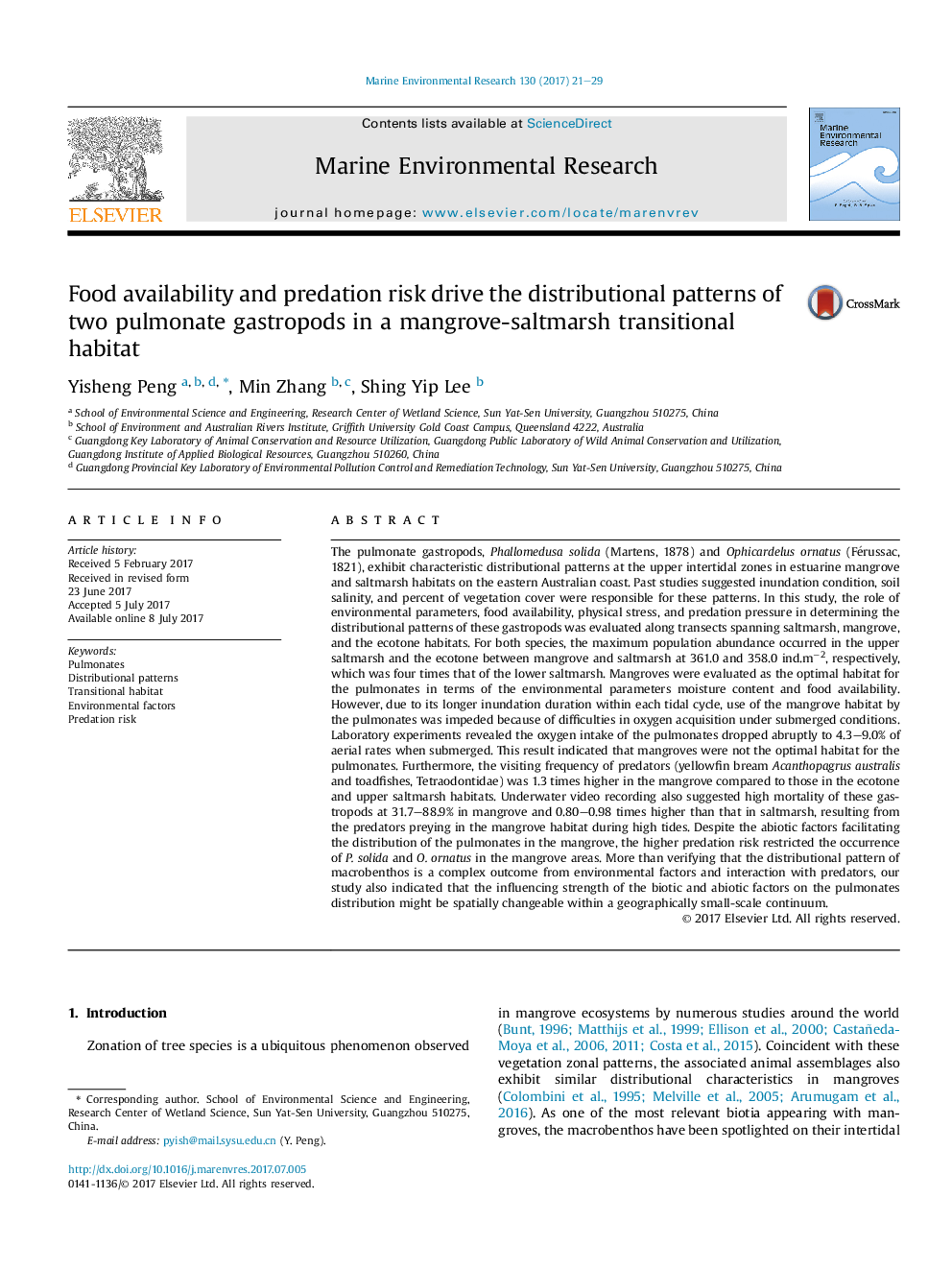| کد مقاله | کد نشریه | سال انتشار | مقاله انگلیسی | نسخه تمام متن |
|---|---|---|---|---|
| 5766139 | 1627553 | 2017 | 9 صفحه PDF | دانلود رایگان |
- The distributional pattern of pulmonate gastropods was described.
- The abiotic factors facilitated the distribution of pulmonates in mangrove.
- Higher predation risk restricted the occurrence of pulmonates in mangrove.
- The distributional pattern of pulmonates is a complex outcome.
The pulmonate gastropods, Phallomedusa solida (Martens, 1878) and Ophicardelus ornatus (Férussac, 1821), exhibit characteristic distributional patterns at the upper intertidal zones in estuarine mangrove and saltmarsh habitats on the eastern Australian coast. Past studies suggested inundation condition, soil salinity, and percent of vegetation cover were responsible for these patterns. In this study, the role of environmental parameters, food availability, physical stress, and predation pressure in determining the distributional patterns of these gastropods was evaluated along transects spanning saltmarsh, mangrove, and the ecotone habitats. For both species, the maximum population abundance occurred in the upper saltmarsh and the ecotone between mangrove and saltmarsh at 361.0 and 358.0 ind.mâ2, respectively, which was four times that of the lower saltmarsh. Mangroves were evaluated as the optimal habitat for the pulmonates in terms of the environmental parameters moisture content and food availability. However, due to its longer inundation duration within each tidal cycle, use of the mangrove habitat by the pulmonates was impeded because of difficulties in oxygen acquisition under submerged conditions. Laboratory experiments revealed the oxygen intake of the pulmonates dropped abruptly to 4.3-9.0% of aerial rates when submerged. This result indicated that mangroves were not the optimal habitat for the pulmonates. Furthermore, the visiting frequency of predators (yellowfin bream Acanthopagrus australis and toadfishes, Tetraodontidae) was 1.3 times higher in the mangrove compared to those in the ecotone and upper saltmarsh habitats. Underwater video recording also suggested high mortality of these gastropods at 31.7-88.9% in mangrove and 0.80-0.98 times higher than that in saltmarsh, resulting from the predators preying in the mangrove habitat during high tides. Despite the abiotic factors facilitating the distribution of the pulmonates in the mangrove, the higher predation risk restricted the occurrence of P. solida and O. ornatus in the mangrove areas. More than verifying that the distributional pattern of macrobenthos is a complex outcome from environmental factors and interaction with predators, our study also indicated that the influencing strength of the biotic and abiotic factors on the pulmonates distribution might be spatially changeable within a geographically small-scale continuum.
Journal: Marine Environmental Research - Volume 130, September 2017, Pages 21-29
